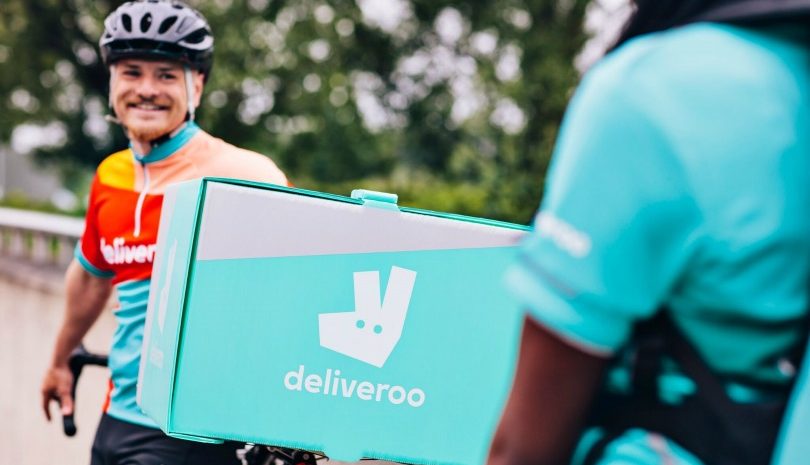How delivery apps are driving restaurant sales

Ordering food for home delivery used to be reserved for the occasional pizza on a Friday night, but the once rare treat has become a much more common occurrence.
Mobile apps like UberEATS, Deliveroo, Menulog and Foodora have made it easier than ever for customers to have a wide variety of food delivered straight to their door, and restaurants are reaping the benefits.
IBISWorld recently reported that new ordering and delivery platforms are driving a two per cent revenue increase in Australia’s restaurant industry in 2017-18, to reach $21 billion.
And while delivery still makes up a small part of restaurants’ overall revenue today, that won’t always be the case, as consumer demand for choice and convenience – as exhibited in the rise of e-commerce – grows.
Bao Vuong, senior industry analyst at IBISWorld, tells IRW that delivery is becoming an increasingly important part of restaurants’ business.
“Those that don’t adapt may be missing out on a significant source of revenue,” he says.
Deliveroo’s country manager for ANZ, Levi Aron, says restaurants that start offering home delivery through the app typically see a 10-30 per cent increase in revenue.
Spokespeople for Menulog and Foodora declined to provide specific figures, saying it depends on the restaurant and their location, but they all agree that delivery tends to drive incremental sales increases, rather than a cannibalisation of restaurants’ existing customers.
As marketing consultant Anna Jones puts it: “The people who go into a Guzman y Gomez to eat and have a beer with friends are not going to choose to have it delivered instead. It’s a different eating occasion.”
Delivery apps also expose consumers to new restaurants they may never have seen or eaten at in real life.
In this way, apps act as a marketing channel, says Rory Murphy, commercial director at Menulog, a food ordering platform, which only offers delivery to a limited extent.
“The simple reality is that by dipping into Menulog’s consumer audience, you get exposure to many more people than previously. What you’re really buying from Menulog is marketing,” Murphy says.
Delivering data
Besides revenue growth, order and delivery platforms also collect a huge amount of data, which they say helps restaurants improve their overall business.
Foodora’s chief marketing officer for Australia, Charlotte Rijkenberg says that sharing data is central to their relationship with restaurants.
“We provide them with information about their shop as part of the relationship. We work very closely with them to make sure we both provide the best experience for the customer. When we see that cooking times can be shorter or the menu could be more efficient, we tell them,” she says.
Meanwhile, Deliveroo provides restaurants with information on the best packaging to delivery different types of food.
“We have over 25,000 restaurants on our system around the world and we know what the best packaging looks like for burgers or pastas. We do work with our suppliers to improve their packaging,” he says.
The advantages of home delivery are becoming clear to more players in Australia’s restaurant industry.
According to Murphy, “every single QSR business in the country is actively exploring their options [for delivery].”
One of those QSR players is Red Rooster, which this year launched its own online ordering and delivery platform, after having partnered with Menulog since 2014.
“We decided demand was big enough that we would build our own platform, which has been very strong for revenue growth,” says Red Rooster’s general manager of operations and delivery, Nathan Kelk.
This involved not only buying cars and hiring drivers, but also building an e-commerce website and linking in the new delivery team to marketing and operations.
Although Kelk says the investment was in the millions, a cost shared by the franchisor and franchisees, he believes it was worth it, citing double-digit growth in the order channel.
“Customers love coming to our site because it’s our own brand. They can sign up to our loyalty program, which allows us to market to them specifically when we have a new deal. From our perspective, we definitely think the loyalty and trust building is best placed in our hands,” he explains.
In November, Red Rooster will roll out GPS tracking capabilities, so customers can see where their order is in real time.
“We’ve seen the business of delivery start off really slow [in the industry] and it’s ramped up,” Kelk says.
Baby boomers hop on delivery
Besides the wider variety of restaurants offering delivery today, new consumer segments are also using delivery apps. Foodora’s Rijkenberg notes that the platform has seen a big increase in the 60-plus demographic in the past year.
“The convenience of home delivery – that trend is growing amongst all age groups at the moment,” she says.
Another indication of the maturing food delivery landscape is the recent launch of a B2B marketplace by FoodByUs, a new player in the food ordering and delivery space.
The platform aims to make it as easy for restaurants to get food delivered from suppliers, as it is for consumers to order dinner on UberEATS.
A version of this story first appeared in issue 2160 of sister publication, Inside Retail Weekly. To subscribe, click here.
Comment Manually
You must be logged in to post a comment.

No comments